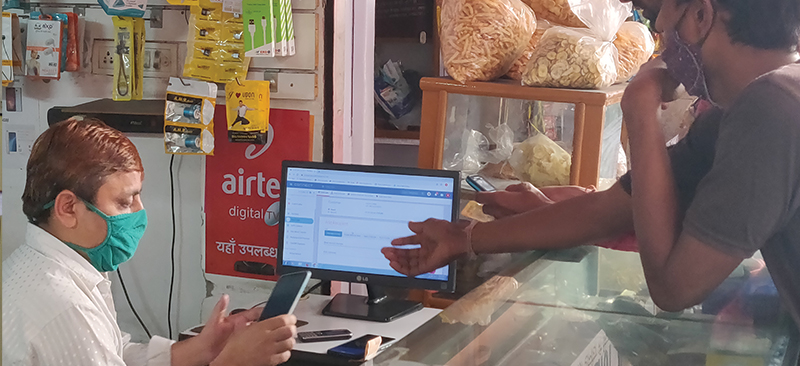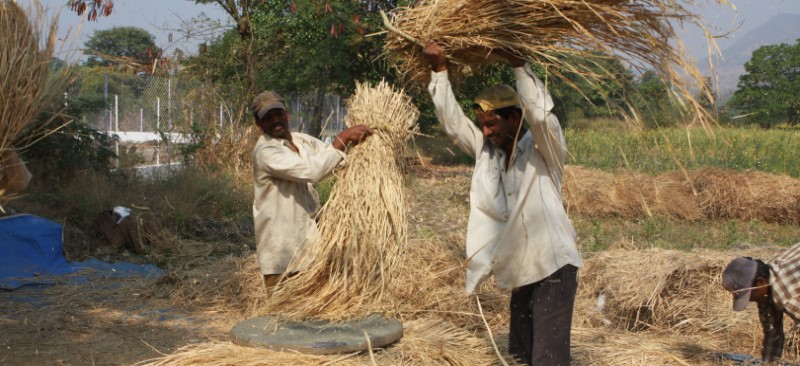VisionFund DRC launched an agent network project to get closer to its customers in the provinces and rural areas. The project’s current phase relied on a partnership with mPESA to use its agents and deploy a USSD platform to offer new services to its customers via other agent networks. Merchant payment was operational for customer credit reimbursement. The bulk payment pilot for the provision of credit was being piloted via mobile money. The USSD platform was in development. The implementation of this project marked VisionFund’s entry into digital financial services and would allow its clients to stay in touch with the institution anywhere. At the close of the project, the agents and teams were expected to be trained.
“Airtel Payment Bank – Behavioral communication to encourage small deposits at agent points “
APB has been striving to serve the rural LMI segment with innovative product offerings. It designed the “Bharosa” (trust) account specifically to attract small savings from rural women. However, the customer footfall in APB’s agent outlets did not rise as expected. With women mostly indoors and busy with household chores, APB’s current communication strategy proved inadequate to relay the product features effectively to this target segment.
MSC helped APB design communication that could nudge rural women to open Bharosa accounts and start small savings at its agent outlets.
Mukhyamantri Kanya Utthan Yojana (MKUY)
The Govt. of Bihar has conceived MKUY to improve the socio-economic status of girls and women in the state. However, the current fund transfer process operates on a pull-based mechanism where beneficiaries need to explicitly register for the scheme through an intense data collection mechanism. This adds unnecessary friction to the program, thereby affecting the scheme’s uptake.
MSC proposed a full Direct Benefit Transfer mode push-based mechanism that automatically identifies and on-board beneficiaries needs to be envisaged and implemented. MSC has provided advisory services and proposed a holistic digital solution for scheme management and timely approval of payments. Some solutions include using core public financial management reform principles such as Single Source of Truth to integrate current beneficiary databases for better scheme delivery; to establishing a dedicated cell to oversee the implementation of the envisaged technology architecture of MKUY.
Click here to go back to the building state capacity website.
Urban Wage Employment Initiative Scheme, MUKTA
The Govt. of Odisha has launched the MUKTA scheme for providing employment and weekly wages to the unemployed labor force of the state through SHGS in small-scale community infrastructure projects. However, the scheme faces challenges in implementation mainly resulting from delays in settlement of claims and ineffective project management.
MSC has proposed using digital payment systems as a tool to increase efficiency, enhance transparency and reduce delays in contract management and fund disbursement processes. Based on the field study and diagnostic assessment of the scheme MSC has proposed a holistic digital solution for scheme management and timely approval of payments to wage seekers with features such as transparent and authenticated digitized input of work progress, workflow automation, smart payment engine, and real-time monitoring of data to track expenditure and progress of the scheme.
Click here to go back to the building state capacity website.
National Health Authority’s Ayushman Bharat Pradhan Mantri Jan Aarogya Yojana (PMJAY)
The Government of India launched Ayushman Bharat Pradhan Mantri Jan Aarogya Yojana (PMJAY) in September 2018 to address the persistent challenges of affordability and accessibility in the healthcare system in India. Though the scheme has achieved significant milestones in the first year, various learnings and best practices could be used for further course corrections to improve the processes, efficiency, and overall scheme performance. States also have their own implementation experiences, which can be leveraged at the National level.
MSC has proposed digital payment systems as a tool to increase efficiency, enhance transparency and reduce delays in claim adjudication processes.
Click here to go back to the building state capacity website.
Just in time funding for Finance Department in Odisha
The Odisha government has one of the most advanced treasury management systems in India. However, challenges of manual processing of bills, idle parking of funds, and float in the system persist that lead to sub-optimal fund utilization.
MSC is implementing a Just-in-Time funding solution for the finance department of the Government of Odisha. The solution will ensure that the money owed by the state’s implementing agencies (IA) to the end beneficiary or the payee in a public project is paid directly from the state’s treasury in real or near real-time. These could be urban local bodies, autonomous bodies, or NGOs that undertake public or welfare work on behalf of the government. The solution will mark two key departures from the existing fund flow mechanism. Firstly, the ability to draw the funds directly from the state’s treasury will eliminate the need for the IAs to park funds in the commercial bank accounts outside consolidated funds. Secondly, the pull-based funding mechanism allows the IAs to make payments to their payees in real-time.
The benefit of JIT funding is that it will allow the finance department to reduce ‘idle cash’ outside the treasury and optimize borrowing costs. Also, with real-time visibility on cash balances, the administrative burden associated with expenditure reporting and utilization is likely to get reduced.
Click here to go back to the building state capacity website.




